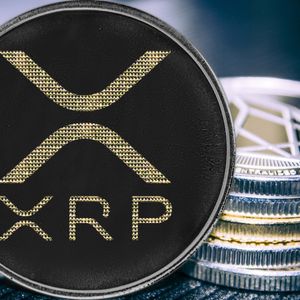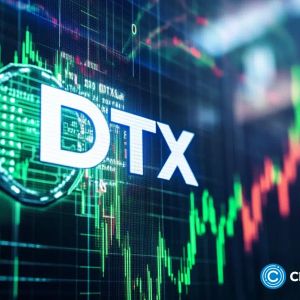The team of each crypto project seeks to organize trading of its token on the exchange, as this not only opens up new opportunities for the development of the project, but also significantly affects the liquidity and value of tokens. Why Listing is Necessary In general, cryptocurrency listings on exchanges serve the same purposes as securities listings. The procedure makes coins available for purchase by a wide range of individuals and opens up opportunities for investors to profit from changes in the exchange rate. Project teams, in turn, gain the opportunity to attract additional liquidity. As with IPOs for stocks, many projects go through a long journey from the idea of listing to its practical implementation, and in some cases, this requires significant time and material costs. Nevertheless, in the decentralized world of cryptocurrencies, the complexity of this process depends heavily on the jurisdiction of the crypto exchange and the token issuer, as well as whether the token is intended to circulate exclusively within the legal framework or whether the focus is on mass appeal and accessibility. Any quality project whose token has a clear tokenomics structure and whose listing goals are specifically related to project development aims to list on major centralized exchanges. The exchanges, in turn, try to scrutinize the project before allowing the token to trade. Why Crypto Projects Seek to Launch Coin Trading Listing a token on an exchange significantly increases its liquidity. After a successful addition of the token, users can freely buy and sell it, which creates an active market. This also increases the project's recognition among investors. Centralized exchanges, such as Binance or Coinbase, offer a high level of liquidity due to the large number of users, while decentralized exchanges, such as Uniswap or PancakeSwap, allow users to directly exchange tokens without intermediaries, which also contributes to liquidity but, as mentioned earlier, may be associated with risks such as low liquidity or errors in smart contracts. As an example of the impact of listing on the price of a crypto asset, we can recall the PEPE and TRUMP tokens. The PEPE token appeared on Coinbase on November 13, 2024, and amid the listing, the price of the coin soared by 75%, reaching a level of $0.000022. https://coinpaper.com/7131/what-you-need-to-know-about-trump-and-melania-the-cryptocurrency-of-trump-s-family Within 24 hours after trading began on the exchange, the token grew by 40% and by 96% in a week. Approximately the same story happened with TRUMP. After listing, the value of the token can change under the influence of various factors, which primarily include the community's interest in the coin or its project. Increased interest from traders can lead to a price increase immediately after listing, and a high trading volume usually indicates sustained interest in the token, which can support or increase its price. The news surrounding the project and the coin is equally important. In general, it's all like classic exchange-traded assets, but without the strict filters that are set on securities exchanges, which creates higher volatility and risk of loss of funds for the investor. Rules and Procedures It should be noted that, unlike the securities market, not all jurisdictions regulate the listing of tokens, so exchanges rely on their own criteria. In regulated jurisdictions, token listing is carried out according to a clearly established procedure. For example, requirements for the listing of cryptocurrencies and their issuers are established in Belarus, Kazakhstan, the EU, the UAE, and some other countries where cryptocurrencies are strictly regulated. In such jurisdictions, the exchange should only allow tokens to be traded that meet strict criteria for liquidity, prevalence in the world, and technological sophistication. For example, the issuance and listing of anonymous cryptocurrencies are prohibited in almost all jurisdictions where cryptocurrencies are regulated. In the EU and the US, it is very important what the token itself is and to which category of crypto assets it belongs. Different requirements apply to the issuer depending on this. For example, in the EU, since the end of 2024, there has been talk about delisting USDT from exchanges due to its non-compliance with the Union's requirements for stablecoins. In general, to list a token on an exchange, the team needs to go through several steps, which include: Assessment of possible crypto exchanges and regulations in the jurisdiction where the exchange operates. Even global exchanges, whose head offices are located somewhere on tropical islands, are forced to comply with the regulatory requirements of the jurisdiction of their clients. As a result, this is expressed in the fact that one token is available to a client from one country, and not available to a client from another country. Preparation of documentation - it is necessary to prepare a high-quality Whitepaper and comply with regulatory requirements for the token. Submitting an application to the exchange and passing its assessment. The exchange checks not only the token itself, but also its issuer and its team. The process can take several months. Roadshow - preparing the audience for listing. It is necessary that everyone knows that the listing will take place, and the interest in the token was high at the start of trading. Launch of trading. As already mentioned, there are exceptions. Moreover, quite often. Due to the decentralized nature of cryptocurrencies, many exchanges list this or that token themselves to attract customers. This often happens with meme coins or other tokens that have grown on a wave of hype, such as AI tokens. Also, each user can list any token on a decentralized exchange, there are no requirements there and everything is decided by supply and demand. Therefore, there have been cases when even scam tokens or fake tokens appeared on DEX. In this regard, the decentralized nature of cryptocurrencies does not have a positive effect on the security of trading.




















